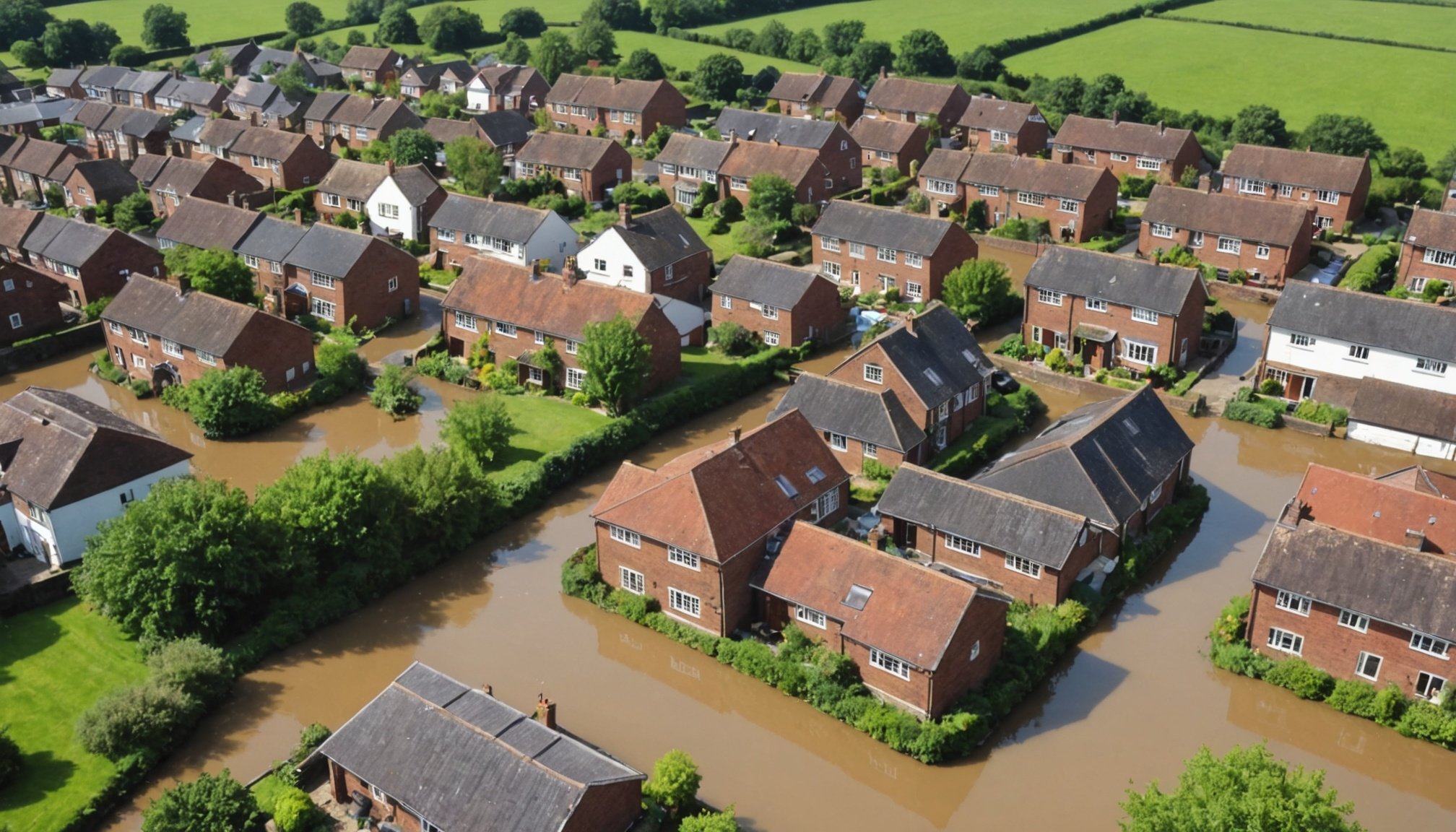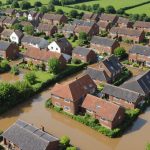Understanding Flood Risks in the UK
Flood risks in the UK are a crucial concern for homeowners, particularly in regions prone to flooding. The most vulnerable regions include parts of the southwest, southeast, and northwest, due to their geographical characteristics. It’s important to understand that climate change exacerbates these risks by increasing the frequency and severity of flooding incidents. Climate factors such as rising sea levels and increased rainfall intensity contribute significantly to this trend.
For homeowners, assessing local flood risks is vital to safeguarding properties. Recognising specific vulnerabilities in one’s area allows for more effective preparation and prevention strategies. Engaging with local authorities to access the latest flood risk assessments and flood data is a recommended step. Such assessments provide insights into expected flood levels and water flow patterns, assisting in making informed decisions about property measures and flood insurance.
Also to see : Unlocking investment potential: a comprehensive guide to uk sheriff’s auctions for savvy property buyers
Being proactive about understanding flood risks can mitigate potential financial and personal damages. Homeowners are encouraged to participate in community flood preparedness programs and to consider individual flood resilience improvements to their properties. This could involve installing flood-proof barriers and using materials designed to withstand water exposure, which are further elaborated in later sections.
Infrastructure Improvements for Flood Resilience
Effective flood-proofing infrastructure is essential for safeguarding properties in flood-prone areas. Homeowners are encouraged to consider implementing drainage solutions to manage excess water. Well-designed drainage systems can redirect water away from structures, reducing the risk of internal flooding. Solutions like swales, which are shallow channels covered with vegetation, promote natural water movement and absorption.
This might interest you : Key legal considerations for purchasing property in uk flood-prone areas
Elevation modifications can further decrease potential damage. Raising homes and critical utilities, such as electrical and heating systems, can prevent significant damage from floodwaters. Consider placing electrical components well above ground level to safeguard against rising waters.
Another practical approach involves installing permeable paving to improve drainage capabilities. These materials allow water to seep through, effectively reducing surface runoff and decreasing flood risks. Permeable surfaces, such as pavers or certain types of asphalt and concrete, enable more efficient water management and can greatly diminish the impact of heavy rainfalls.
By combining these infrastructure improvements, homeowners can develop a comprehensive approach to flood resilience. Each strategy addresses specific areas of concern, helping protect against severe damage and ensuring greater peace of mind. Engaging with local experts and learning from successful examples in other communities can provide valuable insights and inspiration.
Recommended Building Materials
Using flood-resistant materials in construction is paramount for enhancing property resilience in flood-prone areas. Water-resistant construction materials, such as concrete blocks, aluminium, and marine-grade plywood, are specifically designed to withstand prolonged water exposure, thereby reducing damage to structures.
Raised foundations and flood barriers offer significant benefits by physically elevating the building above potential flood levels. These methods prevent water intrusion into living spaces, maintaining both structural integrity and safety during flood events. Raised foundations are often paired with waterproof membranes for additional protection.
Flood barriers, such as temporary or permanent solutions, effectively block water from entering properties. These can be implemented quickly during emergencies and tailored to fit various property layouts. For instance, homes in Carlisle successfully utilised demountable defences, highlighting the practicality of flood barriers in reducing damage.
Additionally, case studies from areas like the Somerset Levels illustrate the effectiveness of material choices in mitigating flood impacts. Innovative approaches, such as using hydrophilic polymers, demonstrate impressive water resistance, setting precedents for other regions. By analysing these examples, homeowners can adopt proven practices, benefitting from insights into flood-resistant materials that have effectively protected properties during severe flooding events.
Utilizing Community Resources
Engaging with community flood resources is crucial for enhancing preparedness and resilience. Local initiatives and programs offer valuable support to homeowners facing flood risks. Community-led efforts often include organising workshops, access to flood kits, and advice on property adaptations, preparing residents effectively for potential emergencies.
Collaboration with neighbours fosters shared adaptation strategies, making overall neighbourhoods more resilient. When communities engage together, they can create systems such as shared flood defences, collective drainage projects, or bulk purchasing of protective materials, which benefit all involved.
It is crucial to emphasise the importance of community engagement in flood preparedness. Participating in local meetings or flood forums enables homeowners to stay informed about flood risks and community resources. Learning from the experiences of others and sharing successful strategies can create a robust network of support.
By tapping into these resources and fostering community collaboration, homeowners can enhance their flood resilience considerably. This collective action not only strengthens individual preparedness but also builds a resilient community spirit capable of facing and mitigating flood risks.
Insurance Options and Financial Support
When it comes to flood insurance in the UK, multiple options exist for homeowners to consider. It is crucial to evaluate the extent of coverage each policy offers, including protection for structural damage and personal belongings. Comparing various insurance providers can highlight differences in premiums and conditions, ensuring homeowners choose the most comprehensive option for their needs.
The UK government offers various grants and financial support measures to assist homeowners in boosting their flood resilience. These financial aids typically cover preparatory measures, such as installing flood barriers or elevating key utilities. Homeowners are encouraged to explore these options, as they significantly offset the costs associated with implementing flood-proofing strategies.
When negotiating with insurance companies, it is beneficial for homeowners to be well-versed in their coverage needs and potential risks. Highlighting improvements and resilience measures undertaken can often result in premium reductions or more favourable terms.
A proactive approach not only improves negotiation leverage but also demonstrates commitment to mitigating risks, fostering a cooperative relationship with insurers. Many homeowners successfully secure better coverage through persistence and informed discussions, showcasing the importance of knowing one’s needs and available financial assistance avenues.
Preparedness Plans and Strategies
In preparing for potential flooding, it’s critical to develop a personal flood emergency plan tailored to specific household needs. This plan should include designated safe routes and evacuation points to use during a flood event. Regularly reviewing and practising this plan ensures all household members know their roles and actions to take when a flood warning is issued.
Essential items and supplies are crucial to include in a flood kit. This should contain bottled water, non-perishable food, first aid supplies, flashlights, and important documents kept in a waterproof container. Additionally, having spare batteries, essential medications, and a portable phone charger can provide comfort and safety during emergencies.
Regular updates and drills are vital for maintaining preparedness. By schedule, homeowners should conduct practice drills, discuss the plan with family, and adjust it as needed. This practice fosters confidence among household members and helps identify any gaps in readiness.
Implementing these flood preparedness strategies equips families to manage flood emergencies effectively. By being well-prepared, homeowners can minimise potential damage and ensure the safety of all household members during such unpredictable events.
Case Studies of Successful Flood Resilience
Learning from flood resilience case studies offers valuable insights for homeowners seeking to protect their properties. In Gloucestershire, a notable example highlights how community collaboration resulted in effective flood defences. Here, residents combined efforts to implement shared drainage solutions that mitigated local flooding risks. This approach not only strengthened individual properties but fortified the entire neighbourhood.
Examining innovative strategies also unveils practical solutions. In York, the use of moveable flood barriers provided flexibility and adaptability, proving vital in protecting properties during severe weather conditions. These barriers can be deployed swiftly, offering temporary yet robust protection.
Lessons learned from past flooding incidents serve as a guide for future preparedness. During the devastating Cumbria floods, proactive property modifications, such as elevated outside units and the installation of water pumps, helped reduce damage significantly.
Homeowners should consider these strategies while tailoring their flood resilience plans. Collaboration with local experts and understanding regional challenges are essential. By analysing and adapting successful tactics from these case studies, homeowners can enhance their flood preparedness and resilience considerably, making informed choices grounded in proven effectiveness.
Governmental Resources and Expert Guidance
Homeowners have access to a wealth of flood resources from the UK government, essential for enhancing property resilience. These resources include detailed flood risk maps, emergency alerts, and financial support plans. Regularly consulting these can help in preempting potential flood threats and inform preparedness measures.
Staying up-to-date with local flood risk assessments is crucial. These assessments, accessible through governmental agencies like the Environment Agency, outline current threat levels and historical flood data. Homeowners can use this information to adapt their strategies for maximal protection. An informed understanding of local conditions can guide decisions on infrastructure improvements and emergency planning.
Expert insights are invaluable in designing effective flood resilience practices. Many specialists, in collaboration with government bodies, offer guidance through workshops, online portals, and publications. These resources provide practical solutions tailored to regional needs and evolving climate patterns. Interviews with experts often reveal cutting-edge practices and affordable measures that homeowners can incorporate to enhance preparedness efficiently.
By utilising these governmental and expert resources, homeowners can not only secure financial and advisory assistance but also benefit from a comprehensive toolkit designed to bolster flood resilience effectively.











